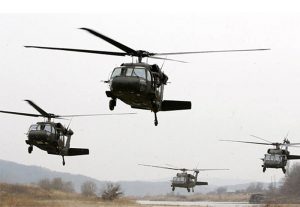Experts and officials emphasized that the damage to Saudi oil infrastructure by the Yemeni Houthi rebels on Saturday showed that it is almost impossible for an extremely wealthy country to protect its important infrastructure from this asymmetric threat. The US analysis center Soufan Center wrote on Monday that the Abqaiq facility and the Khurais deposit in the eastern part of the country were severely damaged as a result of ten drone attacks.
The center also quoted US government officials as saying that US missiles can be used. Since a coalition led by Riyadh confronted Iran in Yemen five years ago, these weapons have been available to the Houthis and have received Iranian support. Especially since the spring of 2019, they have repeatedly proved that these weapons have broken through the Saudi defense system.
Faced with such threats, “we need advanced defense systems that only the US aircraft carrier strike team can have,” AFP said. The organization is organized around one of the US Navy’s aircraft carriers. The former director of the French Secret Service, he still has a reserve requirement, asking not to reveal his identity. “Coordinated attacks like Saturday are not available to everyone, and not everyone can defend against such attacks.” He added.
In early July, Houthis demonstrated an unmanned bomber named “Sammad 3” and a cruise missile named “Al-Quds” at a ceremony held at an unknown location. They also have an explosive drone named “Qasef 2”. A senior official of the French army said recently: “It is the balancing power of technology that allows beggars to threaten the great powers.” “We were defeated by machines weighing 250 kilograms, and we were defeated by Malian mines.”

–drone jammer, programmable drones-Saudi Arabia has invested heavily in the construction of surface-to-air defense systems (such as US Patriot anti-missile batteries, radar and state-of-the-art air force).
According to data from the Stockholm Peace Research Institute, arms expenditures exceeded $65 billion in 2018. Becca Wasser, an analyst at the famous Rand Corp think tank, told AFP: “Saudi Arabia relies heavily on its Patriot system to intercept Houthi projectiles, but the Patriot’s results are mixed. “Should destroy missiles instead of drones.”
She said: “The use of drones shows that the Houthis have discovered a gap in their defense system.” The scale of Saudi Arabia’s oil facilities, the scale of local cities, and their distribution in Saudi Arabia make it difficult to face Protean. It is extremely difficult to threaten to protect them permanently.
Huti UAV was developed based on the 2018 UN expert report. It is made using parts of Iranian origin. It has different sizes and can fly at different speeds and altitudes, so it is difficult to intercept. A French military engineer said: “The problem is that there is no single system that can handle all cases, and drone threats are constantly evolving.”
He added: “Nowadays, sensitive locations are protected by radar and jammers, but now autonomous, programmable drones can be used.” Therefore, it is not sensitive to GPS interference. “They will also increase in speed: we must recognize them faster and farther.”
On August 19, the Saudi Air Force released an image of one of the F-15 fighter-bombers. One of the F-15 bombers destroyed a Qasef-2 UAV flying in Yemen and claimed to have wiped out some of them last year. 20 such equipment.
According to the video uploaded by Houthis, their “Sammad 3” attack drone has a range of 1,500 kilometers, which means that the entire area of Saudi Arabia and some areas of the United States can be reached. United Arab Emirates, Riyadh ally in the Yemen war.